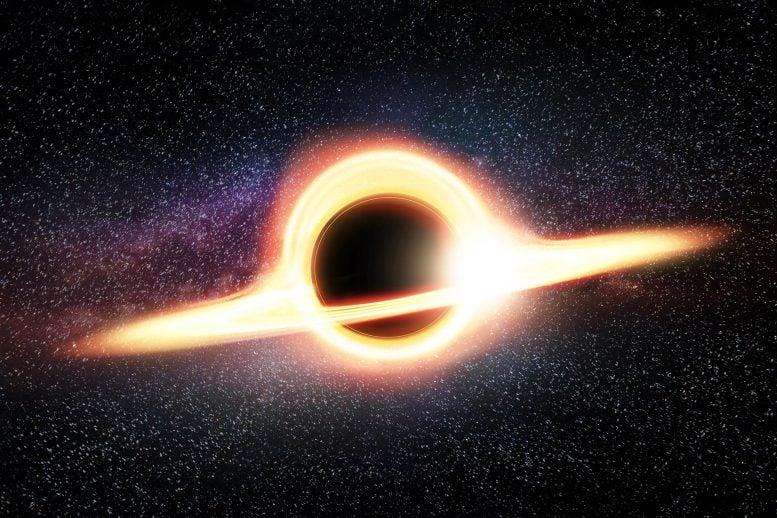
Artist’s illustration of a black hole. A star was discovered zipping around the black hole at the center of our galaxy, the Milky Way, at an astonishing speed of 8,000 km/s.
A newly discovered star only takes four years to travel around the black hole at the center of our Milky Way.
Astronomers have discovered the fastest known star, which travels around a black hole in record time. The star, S4716, orbits Sagittarius A*, the black hole in the center of our galaxy, in four years and reaches a speed of around 8,000 kilometers per second (5,000 miles per second) which is about 30 million kilometers per hour (18 million miles per hour).
S4716 comes as close as 100 AU (astronomical unit) to the black hole – a small distance by astronomical standards. One AU is the approximate mean distance from the Earth to the Sun and corresponds to 149,597,871 kilometers (92,955,807 miles). The study was conducted by researchers at the University of Cologne and Masaryk University in Brno (Czech Republic) and published on July 5, 2022, in The Astrophysical Journal.
In the area near the black hole at the center of our galaxy is a densely packed cluster of stars. This cluster, called the S cluster, is home to well over a hundred stars that differ in their brightness and mass. S stars move particularly fast.
“One prominent member, S2, behaves like a large person sitting in front of you in a movie theater: it blocks your view of what’s important,” said Dr. Florian Peissker, lead author of the new study. “The view into the center of our galaxy is therefore often obscured by S2. However, in brief moments we can observe the surroundings of the central black hole.”
Stars in the S cluster orbit the black hole at the center of our galaxy at great speed. S4716 is the fastest. Credit: Florian Peissker, University of Cologne
By means of continuously refining methods of analysis, together with observations spanning almost twenty years, the astronomers have now identified without a doubt a star that travels around the central supermassive black hole in just four years. In total, five telescopes observed the star, with four of these five being combined into one large telescope to allow even more accurate and detailed observations.
“For a star to be in a stable orbit so close and fast in the vicinity of a supermassive black hole was completely unexpected and marks the limit that can be observed with traditional telescopes,” said Peissker.
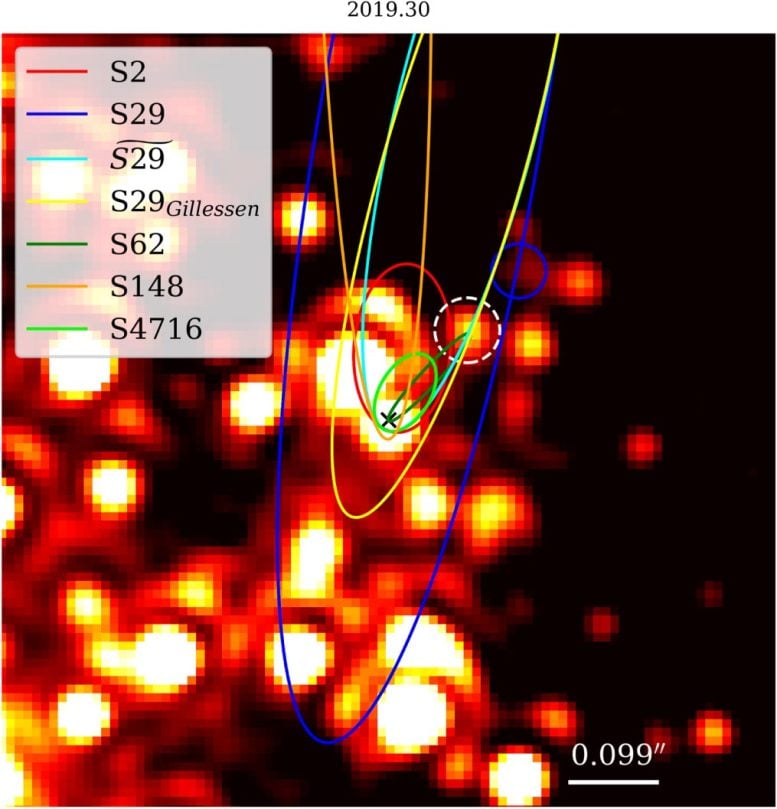
The K-band view of the GC observed with NIRC2 (Keck) in 2019.30. This image is high-pass filtered and shows the position of several S stars close to Sgr A*, which is indicated by a black cross. The star in the white dashed circle shows a K-band magnitude of 16.3 mag, while the star in the blue circle is 17.0 mag faint. Both K-band magnitudes are consistent with the reported values for S62 by Peißker et al. (2020a) and those for S29 by Gillessen et al. (2017) and Peißker et al. (2021b). Here North is up and east is to the left. Credit: The Astrophysical Journal, DOI: 10.3847/1538-4357/ac752f
Moreover, the discovery sheds new light on the origin and evolution of the orbit of fast-moving stars in the heart of the Milky Way. “The short-period, compact orbit of S4716 is quite puzzling,” Michael Zajacek, an astrophysicist at Masaryk University in Brno who was involved in the study, said. “Stars cannot form so easily near the black hole. S4716 had to move inwards, for example by approaching other stars and objects in the S cluster, which caused its orbit to shrink significantly,” he added.
Reference: “Observation of S4716—a Star with a 4 yr Orbit around Sgr A*” by Florian Peißker, Andreas Eckart, Michal Zajacek and Silke Britzen, 5 July 2022, The Astrophysical Journal.
DOI: 10.3847/1538-4357/ac752f


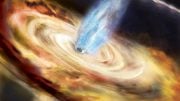



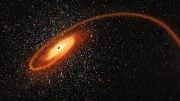
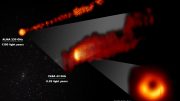

Excellence in information. 🌹🌹
Nice drawing art! I can make a black hole too, only with no direct proof whatsoever of its physical existence.